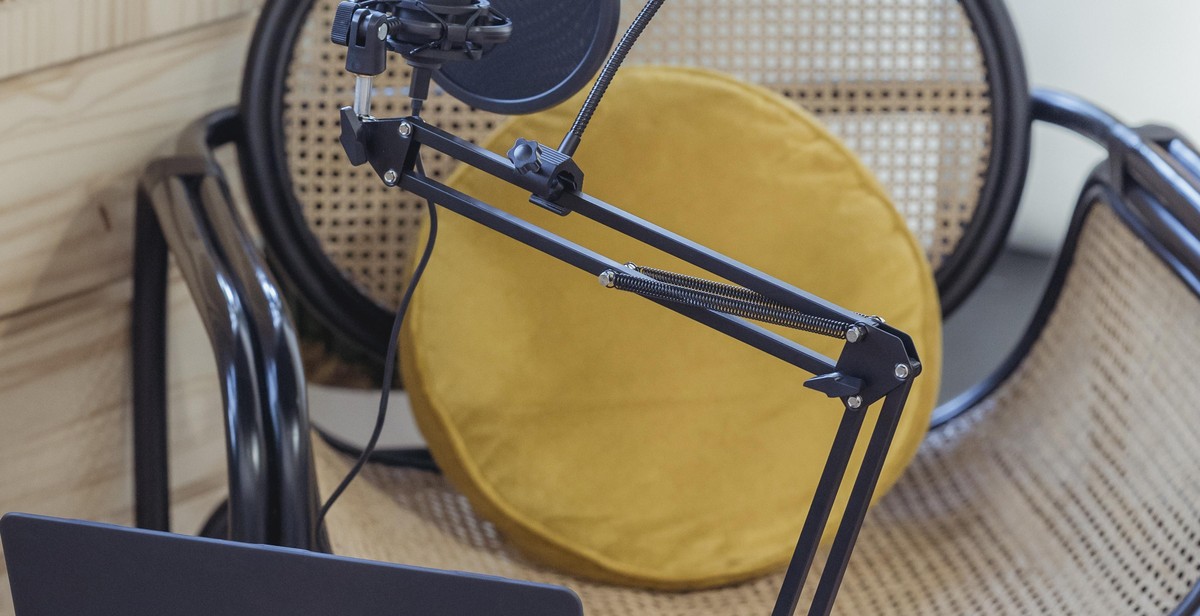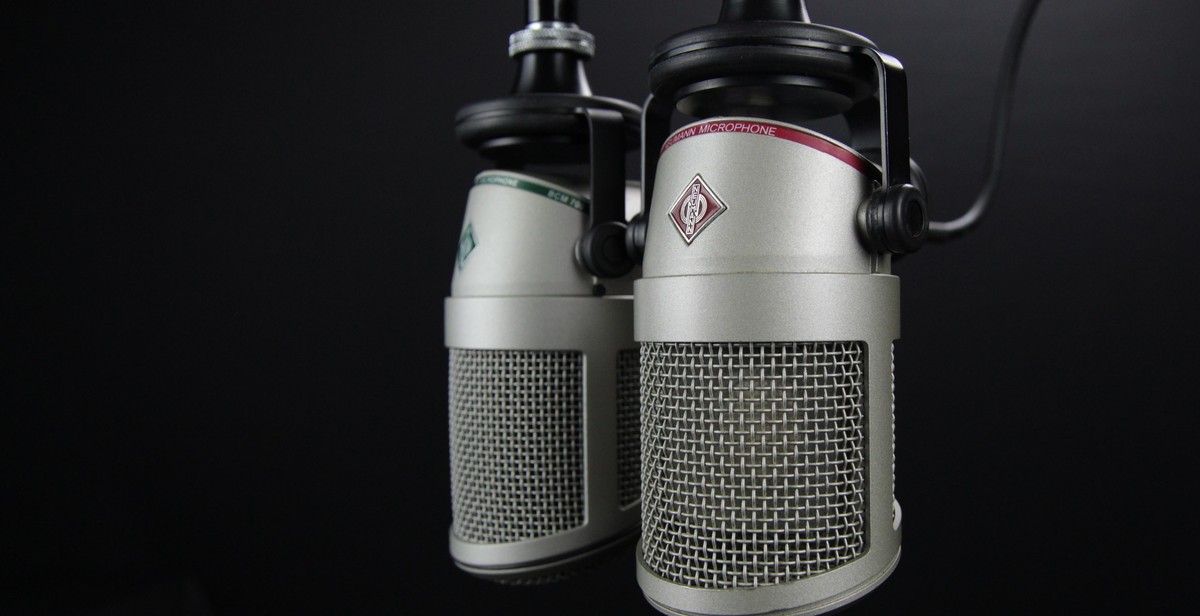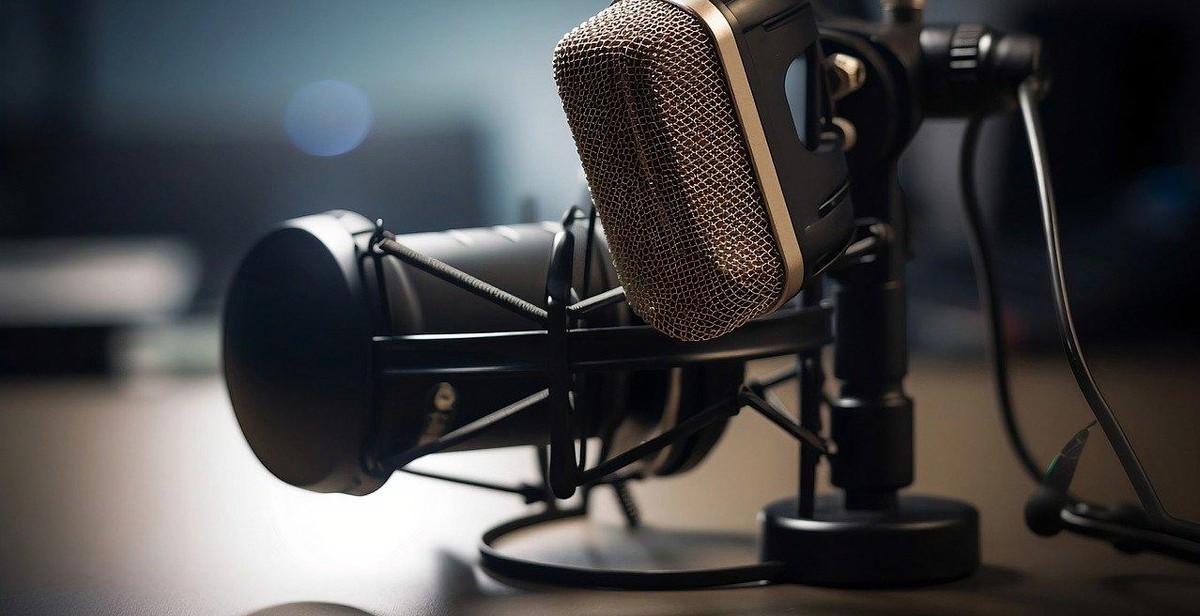How to Start a Podcast for Your Business or Hobby
Podcasts have become increasingly popular in recent years, with millions of people tuning in to listen to their favorite shows on a regular basis. Whether you’re a business owner looking to promote your brand or a hobbyist looking to share your passion with the world, starting a podcast can be a great way to reach a wider audience.
Why Start a Podcast?
Podcasting offers a unique way to connect with your audience on a deeper level. Unlike other forms of content, such as blog posts or videos, podcasts allow you to speak directly to your listeners, creating a more personal and engaging experience. Additionally, podcasts can be consumed on-the-go, making them a convenient way for people to learn and stay entertained while they’re on the move.
What You Need to Get Started
Starting a podcast doesn’t require a lot of equipment or technical know-how. All you really need is a microphone, a computer, and some recording software. Of course, if you want to produce a high-quality show, you may want to invest in additional equipment like a mixer or soundproofing materials.
- A computer or laptop
- A microphone
- Recording software
- Optional: Mixer, soundproofing materials
Choosing a Topic and Format
When starting a podcast, it’s important to choose a topic and format that aligns with your goals and interests. Whether you want to interview industry experts, share your personal experiences, or provide educational content, there is a podcast format that will work for you.
| Podcast Format | Description |
|---|---|
| Interview | Guest interviews on a specific topic |
| Solo | Host shares personal experiences and insights |
| Co-hosted | Two or more hosts discuss a topic |
| Panel | Multiple guests discuss a topic |
| News/Current Events | Discusses current events or news stories |
By choosing a topic and format that you’re passionate about, you’ll be more likely to create content that resonates with your audience and keeps them coming back for more.
Why Start a Podcast?
Podcasting has become a popular medium for businesses and hobbyists alike to create content and connect with their audiences. Here are some reasons why you should consider starting a podcast:
Building Brand Awareness
Podcasting is a great way to build brand awareness for your business or hobby. By creating regular, high-quality content, you can establish your brand as a thought leader in your industry and attract new followers and customers. Your podcast can also help you reach new audiences and build relationships with existing ones.
Reaching a Wider Audience
Podcasting allows you to reach a wider audience than you might be able to with other types of content. Podcasts are easy to consume on-the-go, and listeners can tune in from anywhere in the world. This means that you can reach potential customers or followers who might not be able to attend your in-person events or read your blog posts.
Establishing Authority in Your Industry
Podcasting can help you establish authority in your industry by sharing your expertise and insights with your audience. By consistently providing valuable information and insights, your listeners will begin to see you as a trusted source of information and advice. This can help you build credibility and attract new opportunities, such as speaking engagements or partnerships.
Overall, podcasting is a powerful tool for building brand awareness, reaching a wider audience, and establishing authority in your industry. If you’re considering starting a podcast for your business or hobby, it’s important to plan your content and strategy carefully to ensure that your podcast is engaging, informative, and valuable to your listeners.

Choosing a Podcast Topic
Starting a podcast can be an excellent way to connect with your target audience and grow your business or hobby. However, one of the most critical steps in starting a podcast is choosing a topic that will resonate with your audience. Here are some tips to help you choose a podcast topic that will be successful:
Identify Your Target Audience
Before you can choose a podcast topic, you need to identify your target audience. Who are the people that you want to reach with your podcast? What are their interests, needs, and pain points? Once you have a clear understanding of your target audience, you can choose a topic that will be relevant and valuable to them.
Choose a Topic You Are Passionate About
When choosing a podcast topic, it’s essential to choose something that you are passionate about. Your passion will shine through in your podcast, and your enthusiasm will be contagious. If you are not passionate about your topic, your audience will quickly pick up on it, and your podcast will not be successful.
Research Your Competition
Before you settle on a podcast topic, it’s essential to research your competition. What other podcasts are out there that cover similar topics? What are they doing well, and what can you do differently? By researching your competition, you can identify gaps in the market and choose a topic that will stand out.
- Identify Your Target Audience
- Choose a Topic You Are Passionate About
- Research Your Competition
| Pros | Cons |
|---|---|
| Choosing a topic you are passionate about will make your podcast more engaging and enjoyable to produce | If you choose a topic that is too niche, you may struggle to find a large enough audience |
| Researching your competition can help you identify gaps in the market and choose a topic that will stand out | If you choose a topic that is too broad, you may struggle to differentiate yourself from other podcasts |
| Choosing a topic that is relevant and valuable to your target audience will help you grow your audience and connect with them on a deeper level | If you are not passionate about your topic, your audience will quickly pick up on it, and your podcast will not be successful |

Equipment Needed to Start a Podcast
Starting a podcast may seem like a daunting task, but with the right equipment, it can be a fun and rewarding experience. Here are the essential pieces of equipment you need to start a podcast:
1. Microphones
A good microphone is essential for recording high-quality audio for your podcast. There are two types of microphones to consider: dynamic and condenser. Dynamic microphones are ideal for recording in noisy environments, while condenser microphones are more sensitive and better for capturing quieter sounds.
Some popular microphone options for podcasters include:
- Shure SM7B
- Audio-Technica AT2005USB
- Rode PodMic
- Blue Yeti
2. Audio Interface or Mixer
An audio interface or mixer is necessary to connect your microphone to your computer and adjust the levels of your audio. An audio interface is a device that converts analog audio signals into digital signals that can be recorded on your computer. A mixer, on the other hand, allows you to adjust the levels of multiple audio sources.
Some popular audio interface and mixer options for podcasters include:
- Focusrite Scarlett 2i2
- Behringer Xenyx Q802USB
- Mackie ProFXv3 Series
- Zoom LiveTrak L-8
3. Headphones
Wearing headphones while recording your podcast is important for monitoring the audio and ensuring that everything sounds good. Closed-back headphones are recommended as they block out external noise and prevent audio bleed.
Some popular headphone options for podcasters include:
- Sennheiser HD280PRO
- Beyerdynamic DT 770 PRO
- Audio-Technica ATH-M50x
- Sony MDR-7506
4. Recording Software
Recording software is necessary for capturing and editing your podcast audio. There are many options available, from free to paid software. Some popular options for podcasters include:
- Audacity (free)
- GarageBand (Mac only)
- Adobe Audition (paid)
- Pro Tools (paid)
| Equipment | Examples |
|---|---|
| Microphones | Shure SM7B, Audio-Technica AT2005USB, Rode PodMic, Blue Yeti |
| Audio Interface or Mixer | Focusrite Scarlett 2i2, Behringer Xenyx Q802USB, Mackie ProFXv3 Series, Zoom LiveTrak L-8 |
| Headphones | Sennheiser HD280PRO, Beyerdynamic DT 770 PRO, Audio-Technica ATH-M50x, Sony MDR-7506 |
| Recording Software | Audacity, GarageBand, Adobe Audition, Pro Tools |

Recording Your Podcast
Once you have planned your podcast, it’s time to start recording. Here are some steps to follow:
Find a Quiet Room
Recording your podcast in a quiet place is essential to ensure high-quality sound. Choose a room that is free from outside noise, such as traffic or construction. You can also use soundproofing materials, such as acoustic foam, to minimize echo and reverberation in the room.
Get Your Equipment Set Up
You will need to invest in some basic equipment to record your podcast. This includes a microphone, headphones, and a recording software. You can also use a mixer to adjust the sound levels and add effects. Make sure to test your equipment before you start recording to ensure everything is working correctly.
Write an Outline or Script
Before recording, it’s essential to have a clear plan for your episode. Write an outline or script that outlines the main topics you will cover. This will help you stay on track and ensure that you cover all of the necessary points. You can also prepare questions to ask guests if you plan to have any.
Record Your Episode
Once you have everything set up, it’s time to hit the record button. Speak clearly and at a consistent volume to ensure that your voice is easy to understand. If you make a mistake, pause and start again from the beginning of the sentence. After recording, listen to the episode to ensure that the sound quality is good and that there are no errors.
By following these steps, you’ll be able to record a high-quality podcast that your listeners will enjoy.

Editing Your Podcast
Once you have recorded your podcast, the next step is to edit it. Editing your podcast is an important step that can make or break the quality of your final product. Here are some tips on how to edit your podcast:
Choosing an Editing Software
Before you start editing your podcast, you need to choose an editing software. There are many editing software options available, both free and paid. Here are some popular options:
- Audacity: Audacity is a free and open-source audio editing software. It is a great option for beginners as it is easy to use and has a lot of features.
- GarageBand: GarageBand is a free audio editing software for Mac users. It is a great option for those who are just starting out and want a simple editing software.
- Adobe Audition: Adobe Audition is a professional audio editing software. It is a great option for those who want advanced features and are willing to pay for it.
Choose an editing software that suits your needs and budget.
Editing Your Episode
Once you have chosen an editing software, it’s time to edit your podcast. Here are some tips on how to edit your episode:
- Listen to your recording: Before you start editing, listen to your recording from start to finish. Make note of any parts that need to be edited out or any sections that need to be improved.
- Remove unwanted parts: Use your editing software to remove any unwanted parts of your recording, such as pauses, ums, or mistakes.
- Adjust volume levels: Use your editing software to adjust the volume levels of your recording. Make sure that your voice is clear and easy to hear.
- Add music and sound effects: Use your editing software to add music and sound effects to your recording. This can help to enhance the overall quality of your podcast.
- Export your final product: Once you have finished editing your podcast, export it as an MP3 file. This is the most common file type used for podcasts.
Remember to save your project file in case you need to make any changes in the future.
| Editing Tips: | Do: | Don’t: |
|---|---|---|
| Listen to your recording before editing | Make sure your voice is clear and easy to hear | Over-edit your recording |
| Remove unwanted parts | Add music and sound effects to enhance the quality | Forget to save your project file |
| Adjust volume levels | Export your final product as an MP3 file | Use too many sound effects |
Publishing Your Podcast
Once you have recorded and edited your podcast, it’s time to publish it for the world to hear. This section will cover the steps you need to take to get your podcast live and available for download.
Choosing a Podcast Hosting Platform
The first step in publishing your podcast is to choose a hosting platform. There are many options available, each with its own set of features and pricing plans. Some popular podcast hosting platforms include:
- Libsyn: This is one of the oldest and most popular podcast hosting platforms. It offers a range of plans to suit different needs and budgets, starting at $5 per month.
- Blubrry: This platform is designed specifically for podcasters and offers a range of features, including podcast statistics and WordPress integration. Plans start at $12 per month.
- Podbean: This platform offers unlimited storage and bandwidth, as well as a range of monetization options. Plans start at $9 per month.
When choosing a hosting platform, consider factors such as pricing, storage space, bandwidth, and features such as analytics and monetization options. You should also ensure that the platform you choose is compatible with your podcasting software.
Uploading Your Episode
Once you have chosen a hosting platform, it’s time to upload your podcast episode. This process will vary depending on the platform you choose, but generally involves the following steps:
- Log in to your podcast hosting platform account.
- Create a new episode or upload your audio file.
- Add episode details such as the title, description, and artwork.
- Select the appropriate categories and tags for your episode.
- Review and publish your episode.
When uploading your episode, ensure that you use a high-quality audio file and that your episode details are accurate and descriptive. This will help to attract listeners and improve your podcast’s visibility in search results.
Creating Show Notes
Show notes are a written summary of your podcast episode, including key points and links to relevant resources. They can help to improve your podcast’s SEO and provide additional value to your listeners.
To create show notes, you can use a tool such as Google Docs or Microsoft Word. Simply listen to your podcast episode and write down the key points and resources mentioned. You can also include timestamps for specific sections of your episode.
Once you have created your show notes, you can upload them to your podcast hosting platform or publish them on your website or blog. This will help to improve your podcast’s visibility in search results and provide additional value to your listeners.
| Tip: | When creating show notes, consider using keywords related to your podcast topic. This can help to improve your podcast’s SEO and attract more listeners. |
|---|

Promoting Your Podcast
Starting a podcast is only half the battle. Promoting your podcast is equally important to ensure that your target audience finds and listens to your episodes. Here are three effective ways to promote your podcast:
Social Media Marketing
Social media is a powerful tool to promote your podcast. You can use platforms like Twitter, Facebook, LinkedIn, Instagram, and TikTok to share your podcast episodes with your followers. Create eye-catching graphics or videos to promote your podcast episodes and include links to your podcast on major podcast platforms like Apple Podcasts, Spotify, and Google Podcasts. Use relevant hashtags to attract new listeners and engage with your followers to build a community around your podcast.
Guest Appearances on Other Podcasts
Guest appearances on other podcasts can help you reach new audiences and promote your podcast. Research podcasts that have a similar target audience as your podcast and reach out to the hosts to see if they would be interested in having you as a guest. During the podcast, share your expertise and promote your podcast by mentioning the name and providing a brief description of your show. Don’t forget to include a link to your podcast in the show notes.
Paid Advertising
If you have a budget for promoting your podcast, paid advertising is a great option to reach a wider audience. You can use platforms like Facebook Ads, Google Ads, or podcast advertising networks like Midroll to promote your podcast. Target your ads to your ideal audience based on demographics, interests, and behaviors. Use eye-catching visuals and compelling copy to attract new listeners and encourage them to subscribe to your podcast.
| Promoting Method | Pros | Cons |
|---|---|---|
| Social Media Marketing | Free, easy to use, can build a community around your podcast | May not reach a large audience without paid promotion |
| Guest Appearances on Other Podcasts | Can reach new audiences, builds relationships with other podcasters | Requires research and outreach, may not guarantee new listeners |
| Paid Advertising | Can reach a wider audience, can target specific demographics and interests | Requires a budget, may not guarantee new subscribers |
Conclusion
Starting a podcast can be a great way to promote your business or share your hobby with the world. With the right equipment, planning, and execution, you can create a successful podcast that attracts a loyal audience.
Remember to choose a topic that you are passionate about and that resonates with your target audience. Research your competition and find ways to differentiate yourself from them. Create a content calendar and stick to it, so your listeners know when to expect new episodes.
Invest in quality equipment, including a good microphone and recording software, to ensure that your audio is clear and professional. Take the time to edit your episodes and add music, sound effects, and other elements to make them engaging and enjoyable to listen to.
Promote your podcast on social media and other channels to reach a wider audience. Collaborate with other podcasters and influencers in your niche to cross-promote each other’s content.
Starting a podcast may seem daunting, but with the right mindset and preparation, it can be a rewarding and fulfilling experience. Follow the tips in this article, and you’ll be well on your way to creating a successful podcast that resonates with your audience and achieves your goals.
Happy podcasting!
